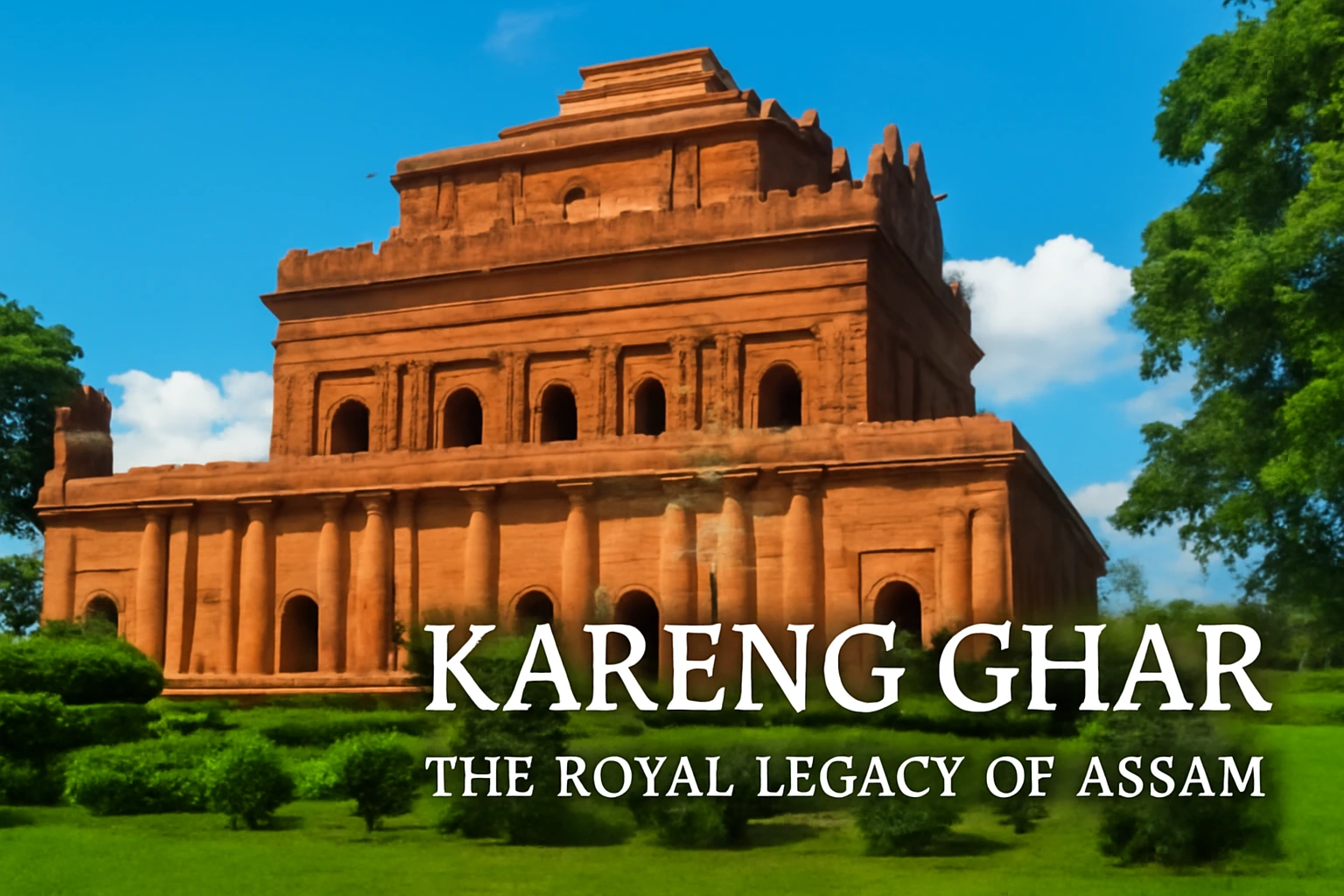Step into the pages of history at Kareng Ghar, where centuries-old walls whisper tales of royal grandeur and architectural brilliance. This magnificent palace stands as a testament to the ingenious craftsmanship of the Ahom rulers who once governed Assam with unmatched splendor.
The Royal Legacy Unveiled
Nestled in the historic town of Garhgaon, approximately 15 kilometers from Sivasagar, Kareng Ghar emerges from the landscape like a guardian of ancient secrets. The name itself carries profound meaning – “Kareng” signifying royalty and “Ghar” representing home, together forming the “Royal Home” that once housed the mighty Ahom kings.
Architectural Marvel of the 18th Century
The current seven-story brick structure, reconstructed in 1752 AD under the patronage of Swargadeo Rajeswar Singha, represents a fascinating blend of indigenous Assamese architecture with Southeast Asian influences. What makes this palace extraordinary is not just its imposing height, but its intricate design philosophy that seamlessly integrates functionality with aesthetic appeal.
Unique Design Elements:
- Multi-tiered pavilions that create a distinctive skyline
- Underground tunnel networks connecting different sections
- Arched doorways and windows showcasing Indo-Islamic architectural fusion
- Strategic placement of servant quarters, storage facilities, and royal chambers across different levels
The Living Heritage
Unlike many historical monuments that feel distant from contemporary life, Kareng Ghar maintains a living connection with Assam’s cultural identity. The palace complex served multiple purposes – from administrative headquarters to royal residence, from cultural center to strategic fortress.
The underground passages add an element of mystery and practical brilliance, serving both as escape routes during conflicts and as cool storage spaces during Assam’s humid summers. These tunnels represent the forward-thinking approach of Ahom architects who prioritized both grandeur and practicality.
Also read: Hollong Tree: The Majestic State Tree of Assam and Arunachal Pradesh
Symbol of Ahom Excellence
For nearly six centuries, the Ahom dynasty ruled Assam, successfully defending their territory against multiple Mughal invasions. Kareng Ghar stands as physical evidence of their administrative sophistication and cultural refinement. The palace’s survival through centuries of political upheaval speaks to both its robust construction and its significance in local collective memory.
Modern Renaissance
Today, under the careful stewardship of the Archaeological Survey of India, Kareng Ghar has transformed from a crumbling relic into a vibrant educational destination. Visitors can explore the restored chambers, walk through the same corridors once frequented by Ahom royalty, and experience the architectural innovations that were centuries ahead of their time.
A Window to Assam’s Golden Age
Kareng Ghar offers more than historical tourism – it provides a profound understanding of Assam’s contribution to India’s architectural heritage. The palace demonstrates how regional kingdoms developed unique artistic expressions while maintaining connections with broader Asian cultural networks.
For the Modern Visitor:
- Educational Value: Perfect for understanding medieval Indian palace architecture
- Cultural Significance: Insight into Ahom administrative and social systems
- Photographic Appeal: Stunning brick facades and intricate design details
- Accessibility: Well-maintained pathways and informational displays
Kareng Ghar remains not just a monument to the past, but a bridge connecting modern Assam with its illustrious royal heritage, inviting every visitor to become part of its continuing story.
In Summary
Kareng Ghar is a historical palace located at Garhgaon near Sivasagar in Assam, India, and is one of the grandest surviving examples of Ahom architecture.
Location and Architecture
- Kareng Ghar, also known as Garhgaon Palace, is situated about 14-15 kilometers from Sivasagar town in Assam.
- The original palace was constructed using wood and stone, but the present seven-storied brick structure was built by Swargadeo Rajeswar Singha in 1752 AD after the older building was destroyed.
- Its design features a blend of Indian and South-East Asian influences, unique multi-storied pavilions, underground tunnels, and distinctive arched windows and doorways.
Historical Significance
- Kareng Ghar served as the central administrative building for the Ahom rulers and was the royal residence during the medieval period.
- The palace complex includes servant quarters, storage rooms, stables in the lower sections, and royal residential chambers above.
- Restoration and preservation by the Archaeological Survey of India have made it an important tourist and educational site showcasing Assam’s heritage.
Cultural Importance and Features
- The palatial structure demonstrates the grandeur and architectural advancement of the Ahom dynasty, which ruled Assam for nearly 600 years.
- Its name “Kareng” translates to “royal palace”; “ghar” means “house” in Assamese, thus “Kareng Ghar” means “royal palace house”.
- It is admired both for its imposing size, historic architecture, and the stories embedded in its underground tunnels and multi-storeyed halls.

